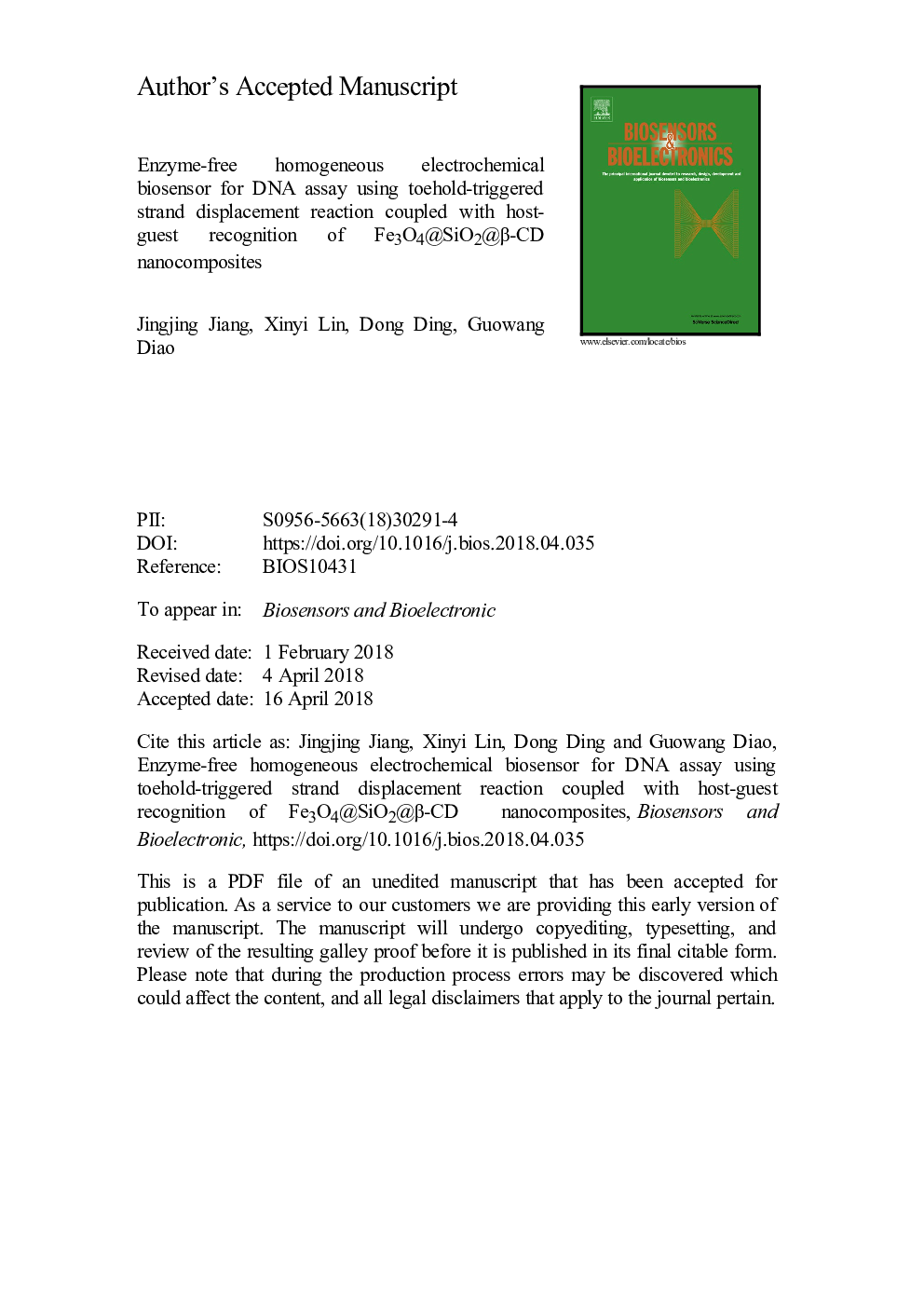| Article ID | Journal | Published Year | Pages | File Type |
|---|---|---|---|---|
| 7229183 | Biosensors and Bioelectronics | 2018 | 22 Pages |
Abstract
Taking advantages of the toehold-triggered strand displacement reaction (TSDR) and host-guest interaction of β-cyclodextrin (β-CD), a facile enzyme-free and homogeneous electrochemical sensing strategy was designed for the sensitive assay of target DNA using Fe3O4@SiO2@β-CD nanocomposites and ferrocene-labeled hairpin DNA (H-1) as the capture and electrochemical probes, respectively. Upon addition of target molecule, the initiated TSDR process induced the conformational change of H-1, and subsequently stimulated the dynamic assembly of assist probes (A-1 and A-2) to generate H-1:A-1:A-2 duplex along with the release of target sequence. The released target could drive the next TSDR recycling and finally result in the formation of numerous DNA duplex. After the molecular recognition of Fe3O4@SiO2@β-CD nanocomposites, a large number of duplex were easily separated from the supernatant solution under an external magnetic field, which led to a decreased H-1 concentration in residual solution, concomitant with a remarkable reduction of peak current. Under the optimized conditions, wide linear range (1-5000â¯pM), low detection limit (0.3â¯pM), desirable reproducibility, good selectivity, and satisfactory practical analysis were obtained by the combination of the superior recognition capability of β-CD, TSDR-induced signal amplification, and homogeneous electroanalytical method. The proposed detection strategy could offer a universal approach for the monitoring of various biological analytes via the rational design of probe sequences.
Keywords
Related Topics
Physical Sciences and Engineering
Chemistry
Analytical Chemistry
Authors
Jingjing Jiang, Xinyi Lin, Dong Ding, Guowang Diao,
